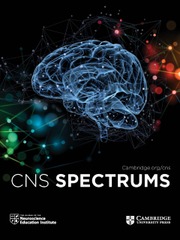No CrossRef data available.
Article contents
Trichotillomania–A Search for Answers
Published online by Cambridge University Press: 07 November 2014
Extract
As defined by the Diagnostic and Statistical Manual, Fourth Edition (DSM-IV), trichotillomania (TTM) is a complex syndrome of distressing, often uncontrolled, urge-driven hair pulling. Generally under-diagnosed, it is known to afflict approximately 1–2% of the population. Historically, the morbidity and psychosocial sequelae associated with this disorder have been seriously minimized. Clinical intervention remains a challenge with conflicting documentation of treatment efficacy and often-reported treatment relapse.
The dedication of an entire issue of CNS Spectrums to this disorder highlights the recent recognition of the clinical importance and scientific complexity of this condition. As guest editors of this issue, we welcome the opportunity to educate clinicians, clinical researchers, and basic scientists regarding current perspectives and challenges inherent in this disorder. It is our hope that these papers will encourage our professional audience to think critically about this condition, empirically study it, and work to improve the suffering of those afflicted with it. Furthermore, it should serve as a resource for hair pullers and their families, in conjunction with the soon-to-be-released American Psychiatric Association text, Trichotillomania: Current Developments.
- Type
- Introduction
- Information
- CNS Spectrums , Volume 3 , Issue 9: Trichotillomania: A New Understanding , October 1998 , pp. 26 - 29
- Copyright
- Copyright © Cambridge University Press 1998


